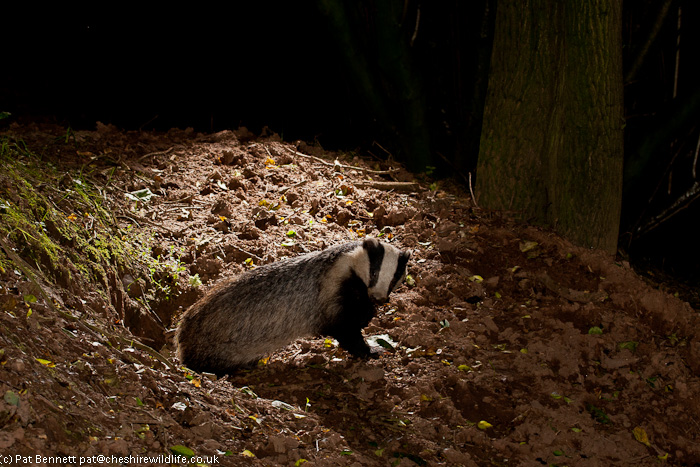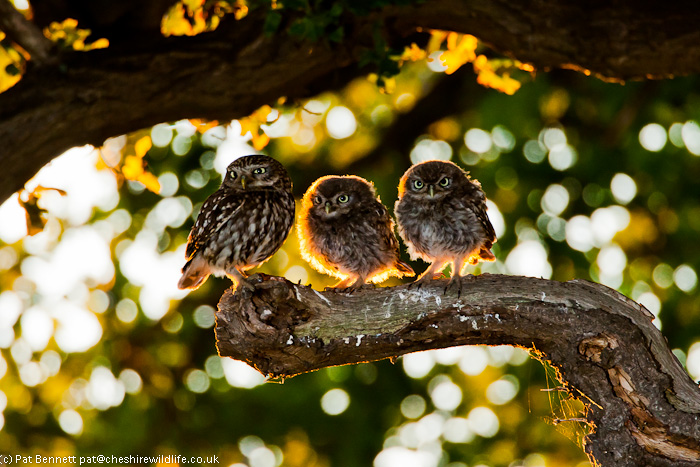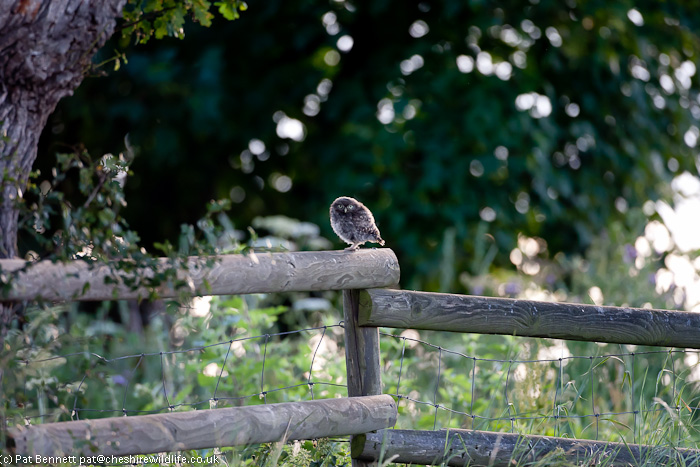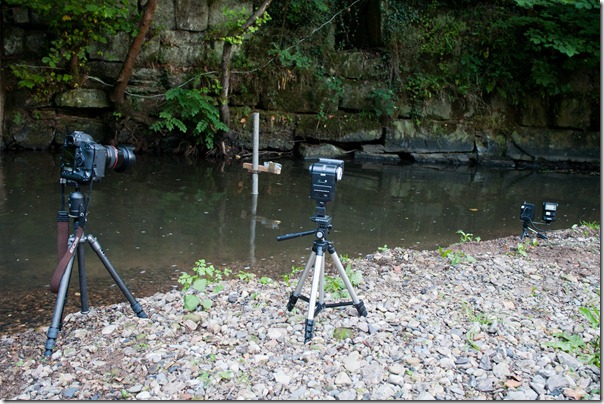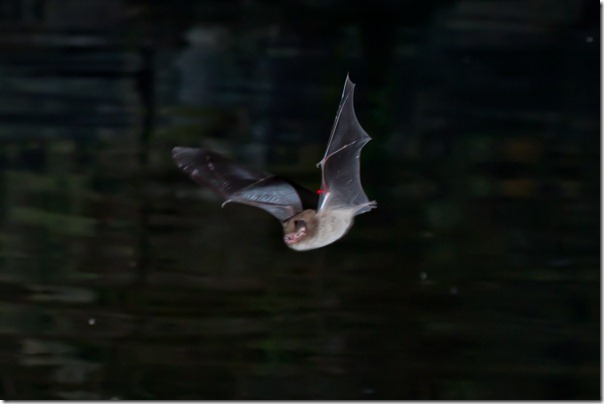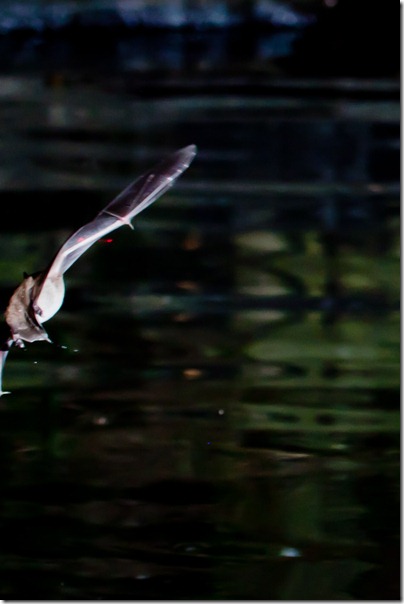Two nights ago, I was batting again. I had taken delivery of a set of what are known as “Ebay triggers”, consisting of a transmitter which normally would sit on the camera’s flash shoe, and a couple of receivers which have shoes to hold a flashgun. Switch on the receivers, press the camera button and the flashguns flash. But – no through-the-lens metering, everything’s totally manual.
They solved a problem for me. I had the laser beam sensor triggering a small flash pointing to my main flash in order to set it off with a simple optical trigger, and this risked spilling light into my camera lens. This session, I had the small flash pointing at an optical trigger with the transmitter on top. I then had two flashguns, fitted with the receivers, illuminating the target breaking the laser beam. This enabled me to position the flashguns anywhere, without risk of flare in my lens.
Got it?
Trouble was, no bats. Not flying through my laser beam, anyway. However, there was a huge hatch of insects from the river which showed up as midges which needed slapping, but also as dancing red dots in the laser beam:
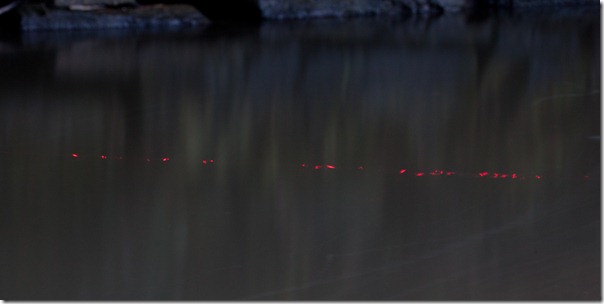
This photograph shows all the insects interrupting the beam in approximately ten seconds. Multiply that over the area of the pool, and it shows an incredible number of insects hatching – all in a very short time, as the activity slowed down dramatically after only a few minutes. I wonder if anyone has used a laser beam like this to study the phenomenon?
Despite the plentiful food available, there were very few bats around, and none of them flew around my backwater. I did wonder whether they were put off by one of my flashguns which was mounted over water, so tonight I laid out my equipment with nothing encroaching on the bat’s domain.
There was very little insect activity, but plenty of bats around. Bill and I held our breaths each time they approached the beam, waiting for the flash which would indicate success, but nothing happened. I went home rather despondent, but when I went through the pictures, I found that I had a photo after all:
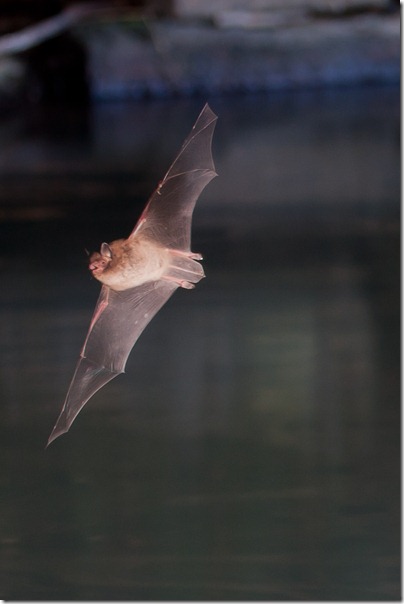
The time on the file showed that it was taken early on, when it was still quite light, and I remembered that Bill and I had been chatting when the flash went off. Neither of us had seen a bat, and we put it down to a midge interrupting the beam.
The photograph is heavily cropped, and the bat was near the edge of the frame. It’s a great improvement on the previous photographs and is encouraging because, while there is still some motion blur, there is room for improvement – the flashguns were set at 1/16th power.
